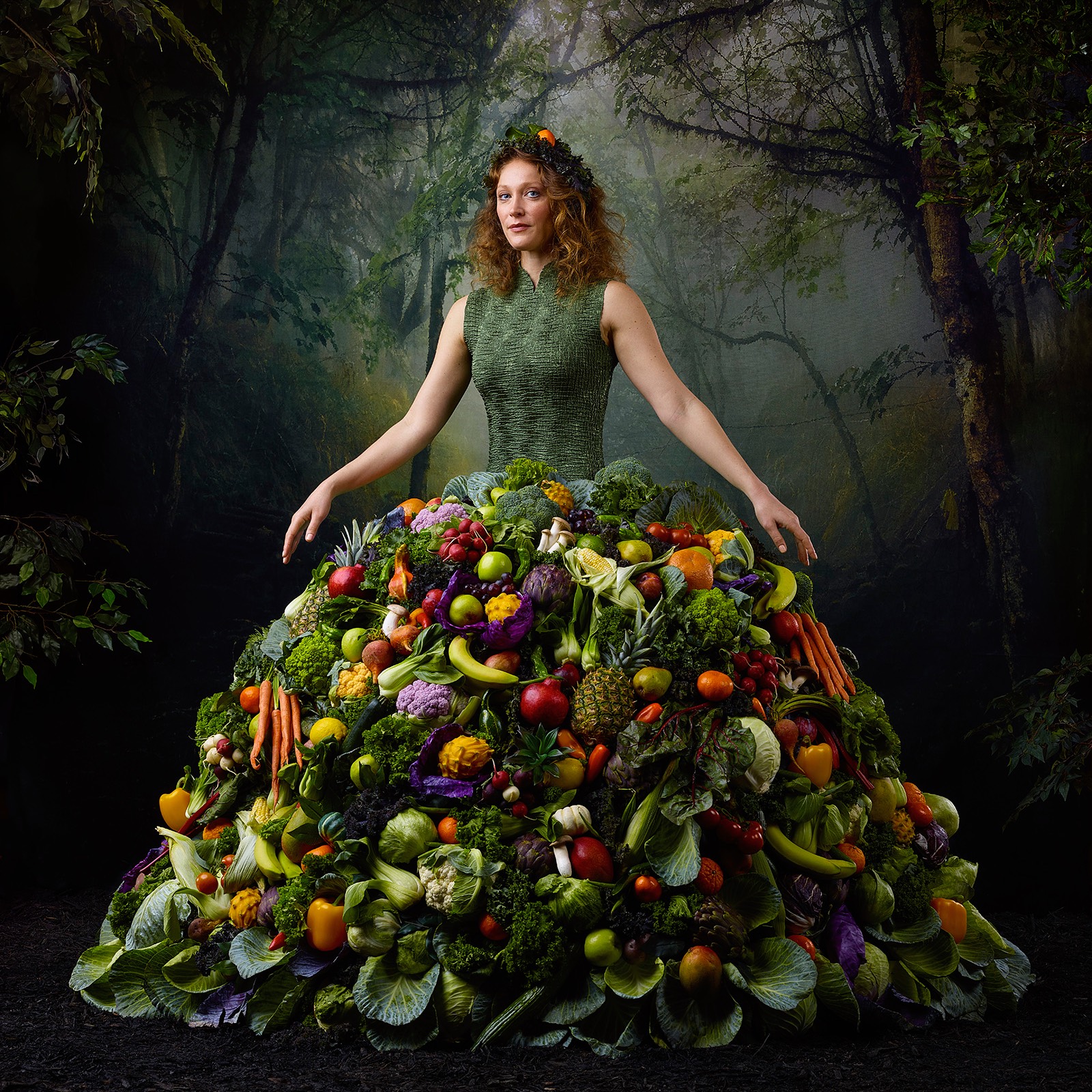The world of film production is always evolving, with new trends, technologies, and strategies reshaping how moving image is made and consumed. As we look to the future, we can see significant shifts in how the film industry operates, from innovative location scouting techniques to the rise of new production methods. Let’s dive into the top trends that will shape the film industry.
1. The Rise of Virtual Production: The Future of Filming
In recent years, virtual production has emerged as a game-changer, and it’s expected to become even more mainstream. Virtual production allows film crews to create immersive environments without the need for extensive physical sets or traveling to remote locations. Instead, they use large, high-definition LED screens and real-time rendering technologies to create stunning digital worlds in-camera. This technology allows for more flexibility and creative control, all while saving time and money.
Key examples of virtual production include The Mandalorian, which used groundbreaking LED stages to create realistic environments on a soundstage. By 2025, more filmmakers are expected to leverage virtual tools for everything from complex action scenes to subtle effects. As the technology becomes more accessible, filmmakers will use it not only to create worlds but also to enhance locations with digital elements.
2. Sustainability in Production: Eco-Friendly Locations and Green Production Practices
Sustainability is no longer just a buzzword in the industry; it’s becoming a necessity. As environmental concerns rise, crews are incorporating eco-friendly practices into their productions. Sustainability will be a top priority for many productions.
One of the key trends is the increasing demand for green filming locations, places that prioritise environmental sustainability. This includes filming in locations that have minimal ecological impact, utilising energy-efficient equipment, and promoting waste reduction on set. More studios and production companies will adopt eco-friendly practices such as recycling, composting, and reducing water consumption.
Additionally, eco-friendly production materials, such as biodegradable props or sustainable costumes, will be more common. These efforts not only help reduce a production’s carbon footprint but also appeal to audiences who are increasingly interested in supporting environmentally conscious productions.

3. AI and Machine Learning: Streamlining the Production Process
Artificial Intelligence (AI) and machine learning have begun to play a larger role in the industry. AI can now assist in various stages of production, from scriptwriting to post-production, making processes more efficient.
In pre-production, AI tools can analyse screenplays to predict which scripts have the potential to be successful based on audience preferences and industry trends; but also in storyboarding, generating visual assets, and even assist with budgeting and scheduling, freeing up human creatives to focus on strategic aspects of the project.
In post-production, AI-powered software can automate tedious tasks such as color correction, sound design, and video editing, significantly cutting down the time and cost of editing a film. AI can also be used for visual effects, such as enhancing CGI or improving special effects in real-time.
4. Drones and Aerial Cinematography: Expanding the Scope of Filmmaking
Drones have revolutionised aerial cinematography over the past decade. Drones allow filmmakers to capture breathtaking shots that were previously impossible or too expensive, such as sweeping landscapes, overhead views of cities, and dramatic action sequences.
Drones will become more advanced with better cameras, longer battery life, and enhanced maneuverability. As drone technology continues to improve, filmmakers will push the boundaries of what’s possible in aerial cinematography, capturing shots that take audiences deeper into the action. Drones are expected to become especially important for action films and nature documentaries, where dynamic visuals are essential.
Additionally, drones will play a significant role in location scouting. With the ability to quickly assess areas from above, filmmakers and location scouts will be able to evaluate potential filming locations more efficiently and make better-informed decisions on where to shoot.

5. Immersive Storytelling: Virtual Reality (VR) and Augmented Reality (AR) in Filmmaking & Advertising
As technology continues to advance, filmmakers and producers are experimenting with new ways to tell stories in more immersive formats. Virtual Reality (VR) and Augmented Reality (AR) will become increasingly common in film and commercial production, offering audiences new ways to engage with motion.
VR films are fully immersive experiences that allow viewers to step into the world of the story, often interacting with characters and the environment. While VR films are still young, we can expect to see more VR projects produced with higher-quality graphics and interactive narratives. These types of motion could be particularly appealing in the gaming and horror genres, where immersion is key to creating tension and engagement - but also in advertising. VR allows viewers to explore virtual environments, making products and services come alive. AR and VR ads often include interactive elements that require user participation, leading to longer engagement and stronger recall.
AR, on the other hand, allows filmmakers to overlay digital elements on the physical world, enhancing the storytelling experience. In 2025, we might see AR elements incorporated into traditional films, allowing viewers to interact with the story in new ways via their smartphones or AR glasses. AR can also be used to create personalised experiences and to improve cost-effectiveness in commercial productions; for example, by reducing the need for physical showrooms and demos, reaching a wider audience at a lower cost than traditional methods.
By providing interactive and immersive experiences, AR and VR ads can significantly increase user engagement and brand recall, while also providing valuable data on consumer behavior.
6. Personalisation and Interactive Films: The New Era of Audience Engagement
Another exciting trend for 2025 is the growing interest in interactive and personalised films. Think of films where the audience can make choices that impact the storyline—similar to Netflix’s Bandersnatch—but taken to a whole new level. With the rise of streaming platforms and digital media, filmmakers will increasingly explore how to personalise the viewing experience, allowing audiences to choose their own paths, storylines, or even endings.
Interactive films could become a major genre, particularly for online streaming services, where viewers can influence the course of the narrative in real-time. Additionally, personalised content could be tailored to individual viewers, offering a more customised film experience based on their preferences and past viewing habits.
Interactive films allow brands to personalise content for individual viewers, increasing engagement and driving conversions. They offer a range of interactive elements, such as clickable areas, branching narratives, and quizzes, tailoring the viewing experience to each user's choices and preferences. This creates a more immersive and engaging experience compared to traditional linear videos.

7. Diversity and Representation: Telling More Inclusive Stories
As audiences demand more diverse and authentic storytelling, filmmakers and producers will continue to prioritise representation. The industry will see more content with diverse casts, stories that reflect a broader range of experiences, and perspectives that challenge traditional norms. Films will explore stories from underrepresented communities, including different cultures, genders, and sexualities, giving rise to new voices and perspectives.
The demand for diverse stories is not just a trend but a cultural shift. This trend is essential for fostering inclusivity and ensuring that all audiences see themselves represented in films, but also in commercials and advertising.
8. The Evolution of Film Festivals: Hybrid and Virtual Events
The global pandemic changed the way we view and experience film festivals, and by 2025, we can see that hybrid and virtual festivals are now the norm. While in-person festivals will continue to be important, filmmakers and audiences alike have embraced the convenience and accessibility of virtual screenings. Hybrid festivals that combine both in-person and virtual events will allow global audiences to engage with films from anywhere, broadening the reach and impact of these festivals.
In 2025, the evolution of film festivals will not only offer a greater variety of programming but will also help filmmakers reach a wider, more diverse audience, showcasing films to people who were not able to attend in person.
Here are some of the most prestigous and popular film festivals:
- Cannes Film Festival (France)
- Venice Film Festival (Italy)
- Berlin International Film Festival (Germany)
- Toronto International Film Festival (Canada)
- Sundance Film Festival (USA)
9. The Continued Growth of Streaming Platforms and Digital Distribution
Streaming platforms like Netflix, Amazon Prime, and Disney+ have already transformed the film industry, and by 2025, their influence will only continue to grow. With more filmmakers turning to digital distribution for their films, streaming services are becoming the primary avenue for releasing new content. This could also put away movie theatres or just shrink their audience.
As the demand for on-demand content increases, filmmakers will increasingly create films designed specifically for streaming platforms, often with shorter runtimes or experimental formats that fit digital viewing habits.
10. Rise of Crowdsourced Filmmaking: Empowering the Audience to Shape Projects
Crowdsourced filmmaking is on the rise, more filmmakers will turn to their audiences for funding, ideas, and even creative input. This democratisation of filmmaking allows fans and supporters to become a part of the filmmaking process, from financing projects through crowdfunding platforms to voting on plot developments or character arcs.
Crowdsourcing will give indie filmmakers a way to bypass traditional financing methods, leading to a greater variety of projects getting off the ground. By allowing viewers to directly contribute to the creative process, filmmakers can develop a sense of community around their projects, fostering deeper engagement with their audience.
The Future of Filmmaking
From virtual production to AI-powered editing, drones, and AR/VR innovations, the future of filmmaking is bright, with endless possibilities for creativity and storytelling.
As we embrace these new trends, it’s clear that the industry is heading into an exciting era, where filmmakers can push the boundaries of what’s possible technologically.
Stay tuned to Production Paradise for more insights into the latest trends and technologies in the evolving world of film production.
Header Image: FGV Schmidle

%20(2100%20x%20405%20px).png)


